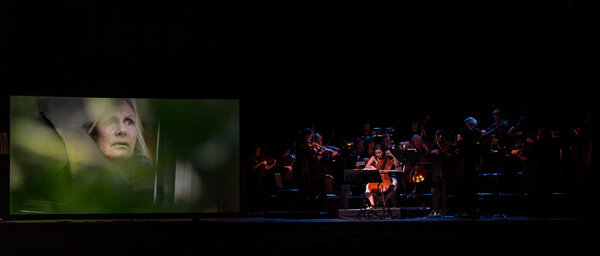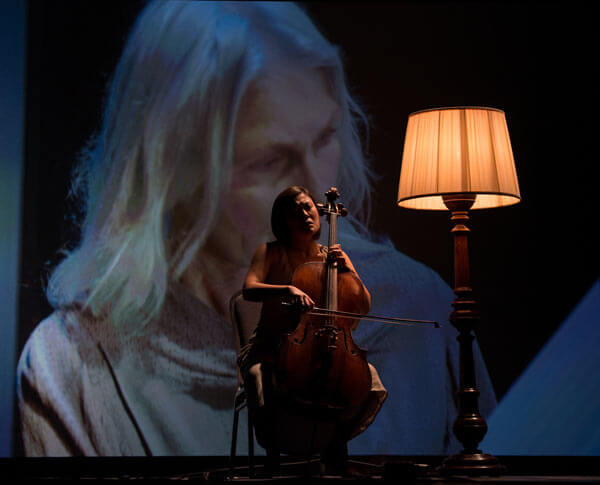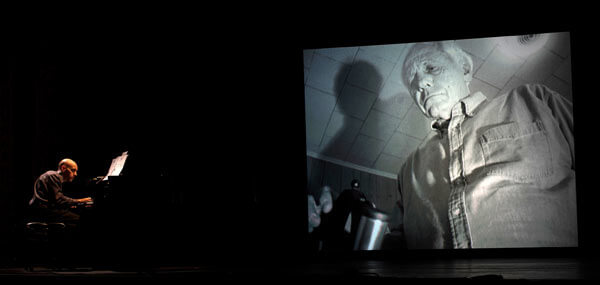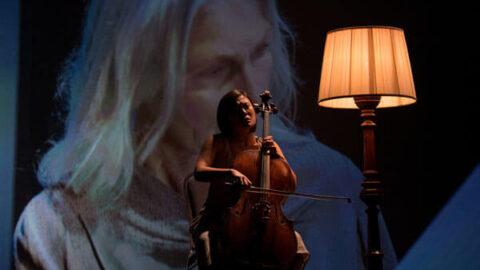
What we see affects what we hear. And while classical music concerts are no exception to this rule, most composers and musicians downplay the phenomenon. This is understandable – after all, music is a discipline unto itself with centuries devoted to purely aural technique. But on the other hand, by incorporating visuals, composers create profound opportunities to contextualize their music changing what we hear, how we hear it, and what we expect to happen next. On October 28, 2013, Lincoln Center’s White Light Festival presented the highly anticipated U.S. premiere of just such a work: Dutch composer/director Michel van der Aa’s Up-close, a 30-minute multimedia cello concerto with string orchestra, electronics, and film.

van der Aa creates elaborate multimedia compositions that fully embrace the interaction of our senses. Fusing together music, film, and theater, van der Aa has become internationally recognized as an interdisciplinary composer who seeks to expand the realm of composition into the audiovisual. Recipient of the 2013 Grawenmeyer Award, Up-close has been one of van der Aa’s flagship pieces in an ambitious collection that includes opera, music theater, acoustic and electronic works. Called a “cello-concerto-cum-psychological thriller” Up-close is designed as part concert music, part film, part theater, and at times an earnest attempt to unify all of these.
van der Aa speaks of an early childhood epiphany when theater made him conscious of the malleable relationships between perception and reality. It is no surprise that this theme permeates much of the work. The stage was designed so that the ensemble and projection screen mirror each other – our concert reality on one side and the film’s metaphoric reflections on the other. The cello’s alter ego is represented on film by the desperate and anxiety-ridden actions of an elderly woman. Nameless and mute, she first appears on an empty concert stage, frantically scribbling coded messages. A sudden jump cut places her lost in a forest, and in a panic she runs until finding a mysterious house where her code is deciphered into tones through the mechanics of a strange steam-punk music box.
The film’s references to futile communication and objectless anxiety amplify the same qualities in the music. Orpheus Chamber Orchestra performed the dark and heavy score with the demanding and jagged energy they are known for. The strings produced surprisingly colorful sonorities given that the score eschews harmonics and extended techniques in favor of simply digging in. Cello soloist Kaori Yamagami’s performance was first-class – feverish and frantic yet convincingly precise. Her charisma radiated, which was no small feat considering that she was competing with giant projections of sweeping camera shots and rapid jump cuts.

van der Aa’s working method creates an expectation that the music, film, and theater will be fully unified, revealing unusual and inventive audiovisual relationships. The strongest moments happened when Ms. Yamagami’s movements synchronized with her filmed alter ego. At one point they both stand at full alert. It is startling and a welcome anchor point for a formal structure that at times felt meandering. Near the end of the piece, Ms. Yamagami leaves the realm of the musicians and steps in front of the film. Using only a lamp, chair, and cello, she and the film create remarkable visual counterpoints and new context for her own performance.
The evening consisted of three other works spanning nearly two decades of van der Aa’s career. Transit for piano, soundtrack, and film reveled in similarly obsessive and psychologically disturbing textures. Pianist Jacob Greenberg performed along to a film featuring an elderly man trapped in a New York City apartment apparently suffering from obsessive-compulsive disorder. The piano and film pieces were written and produced separately for different purposes and later adjusted to work together. The glue came from the electronic soundtrack which was written specifically for Transit, providing a few moments of clever connections between the film’s sound design and the piano performance.

The opening two works both featured solo strings and soundtracks. Memo for solo violin and portable cassette recorder, featured violinist David Bowlin recording his own playing, rewinding, then playing in duet with the cassette version of himself. The audience was charmed during a brief moment when the violin and recorder made the same rapid high-pitched squeals of a rewinding tape. Oog (Eye) for cello and soundtrack was virtuosic in its imaginative electronic manipulations of cello sounds. Michael Nicolas performed a wide-ranging sound palette by bowing and tapping the cello that combined with the soundtrack to produce aural (and visual) illusions. At one point the bow appeared to play when in fact it was not actually touching the strings. At another, the bow was whipped through the air creating a whoosh that was answered by a crash in the soundtrack.
van der Aa’s compositions focus on the value of artistic omnivorism and the embracing of new technological tools. And while there is no question that his work challenges the notion of discipline-specific critique, he maintains convincingly: “I am a composer above all else.”
























